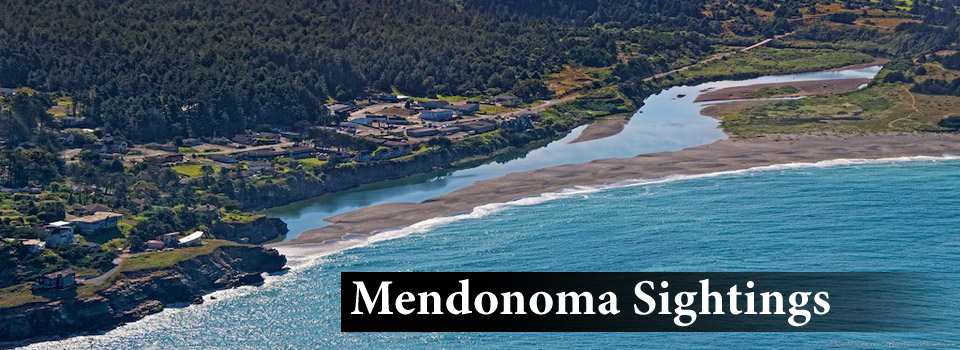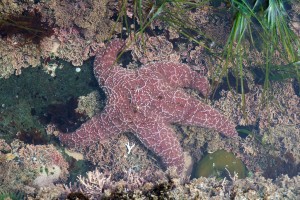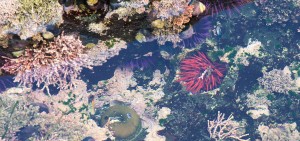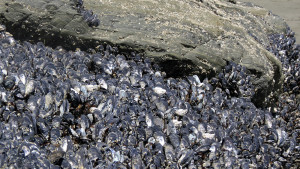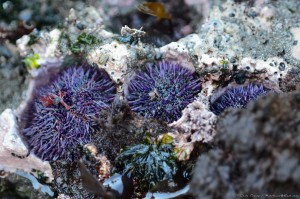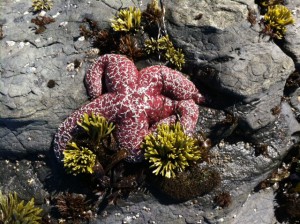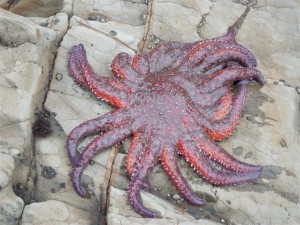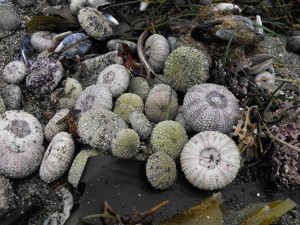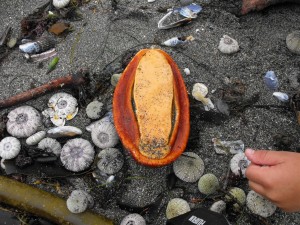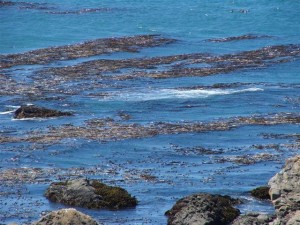On Sept. 3rd, Rozann Grunig found a shocking sight at Shell Beach on The Sea Ranch. The beach was littered with dead Sea Urchins. She also saw a Chiton, a type of sea mollusk, just barely alive. The Chiton was put back into the Pacific Ocean in the hopes it might survive.
Abalones have been found upside down off the Sonoma Coast - there has been much coverage of this event. A Red Tide plus a quiet ocean caused a loss of oxygen in these critters habitat. It is believed by local ocean watchers that this is a natural occurrence. It has happened before and will happen again. Tests are being done to see if something else is happening here. Divers and fishermen tell me while they have seen some dead abalones, there are thousands upon thousands out there and doing fine. The Mendocino Coast looks like it avoided this phenomenon.
I thank Rozann for allowing me to share her photos here.
To see Craig Tooley's photo of the Red Tide, you can see it on this link here on Mendonoma Sightings: http://www.mendonomasightings.com/2011/08/09/red-tide-seen-off-of-the-sea-ranch/
